Bitter Melon
Momordica charantia
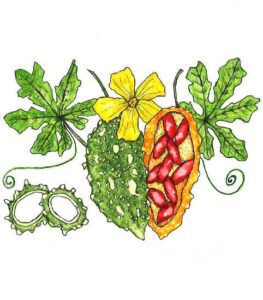
Balsam pear, goya (Japan), or bitter squash (English), 苦瓜 (kǔ guā, Mandarin), करेला (karela, Hindi)
Bitter melon is widely grown throughout Asia, Africa, and the Caribbean. The vining plant is a member of the cucumber family, and the astringent edible fruits vary in shape, color and bitterness. Bitter melon has been a common ingredient in Asian and Indian cuisines for thousands of years, and it is used in a variety of ways in stir fries, pickling and to flavor beer. Asian immigration introduced bitter melon to the Americas in the 20th century, and today it is growing in popularity throughout the United States and particularly in the subtropical areas of Florida.
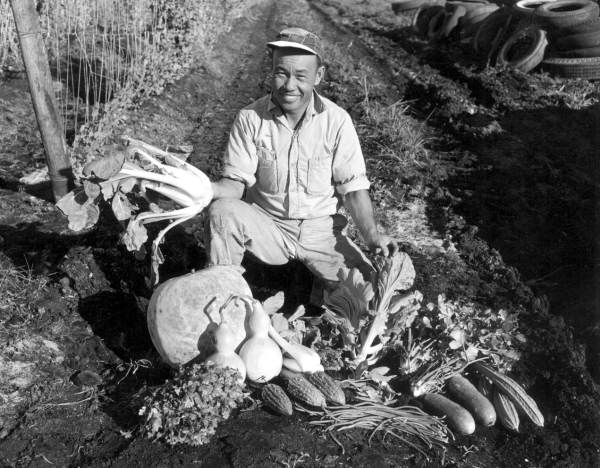
Archaeological evidence suggests that the wild bitter melon originated in Africa and spread to Asia where it was domesticated during prehistory. Through domestication it diversified into a variety of different shapes, colors and bitterness. It made its way to the United States through immigration in the 20th century. Today it is cultivated commercially in Hawaii, California and Florida. In recent years it has received attention as a commercial specialty crop in Florida, while at the same time gaining popularity in home gardens throughout the state.
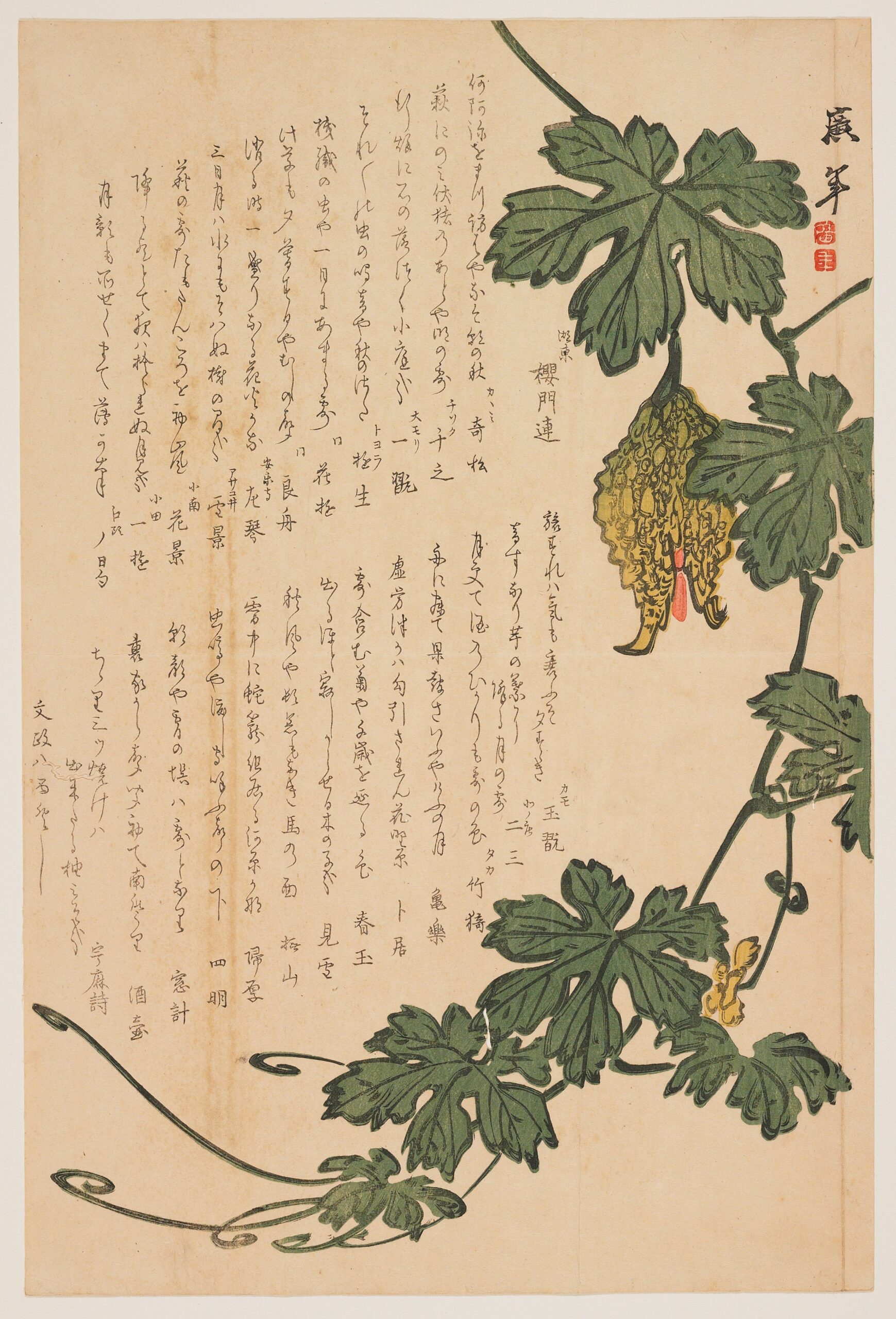
Bearing a distinctive warty fruit in October, bitter melon is traditionally associated with autumn in Japanese poetry. When fully ripe, the fruit cracks and reveals pink flesh, as depicted here. Even though the fruit is edible, bitter melon was enjoyed mostly for its ornamental yellow flowers during the Edo period (1615-1868).
Bitter melon is an astringent, slightly bitter vegetable that is cooked in a variety of dishes. Bitter melons are usually warty in texture and oblong. They are picked from the vine when they are green or only slightly ripe.The seeds are removed before it is cooked. There are two main types of bitter melon; Chinese and Indian. The variety commonly used in Chinese stir-fry recipes is warty, light green and oblong, and it is accompanied with garlic, eggs, pork, “douchi” (black soybean). It has also been used as a bittering agent in place of hops in some beers in China and Japan. The variety used in India is narrow and dark green with deep ridges, and it is often sliced, marinated in salt and tamarind, and then fried with spices for flavoring. Sweet yogurt is used as a side to compliment the bitterness. Bitter melon is commonly picked in Nepal and throughout Northern India. In Sri Lanka, it is used to make “sambol,” a salad with a mixture of cooked and raw ingredients. Bitter melon is also popular in the Caribbean. In Trinidad and Tabago it is called “caraille” and fried. In Jamaica is it called “cerasee” and is often used to make a tea.
Bitter melon is rich in vitamins A and C, calcium, potassium, folate, iron, zinc, and fiber.
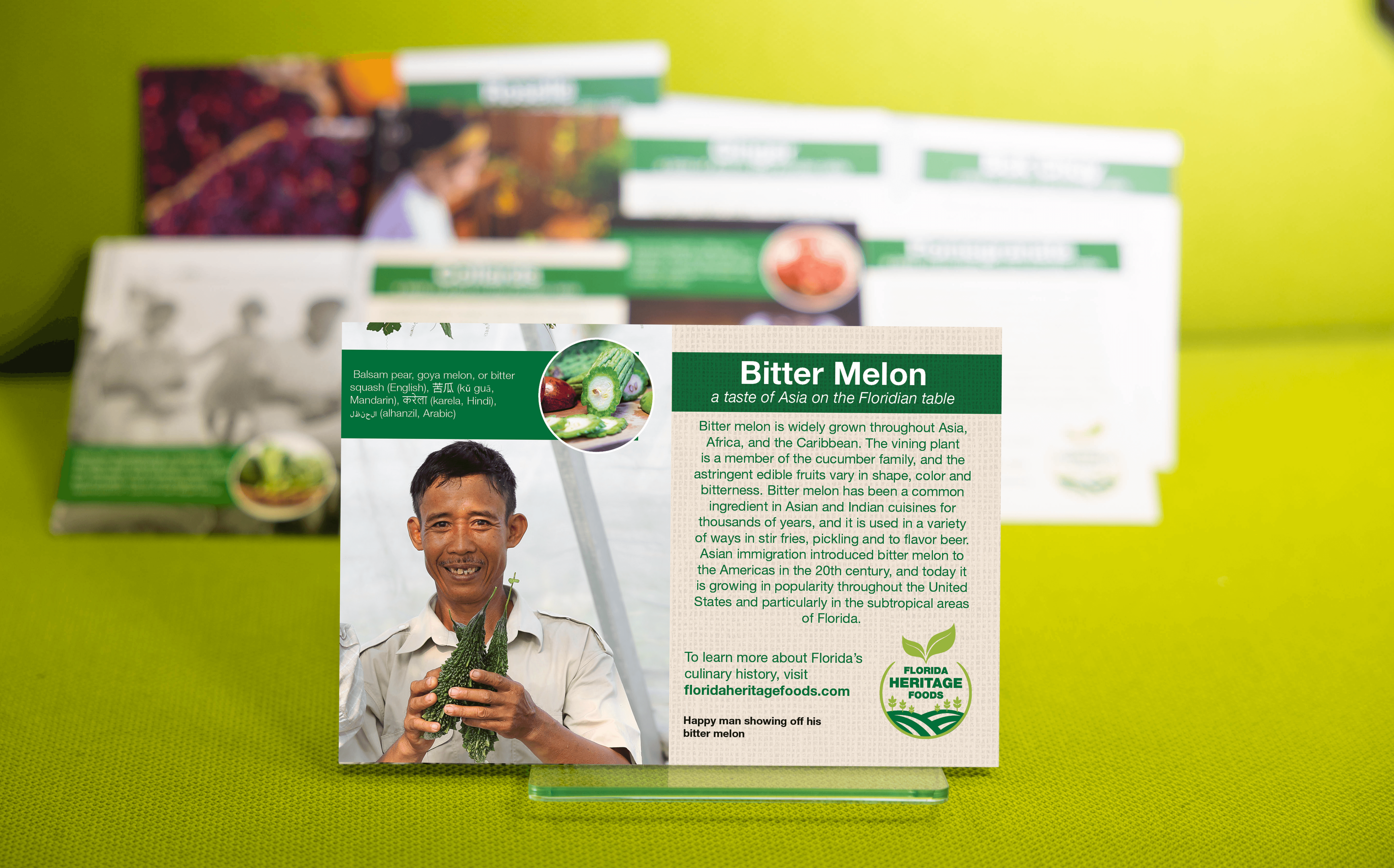
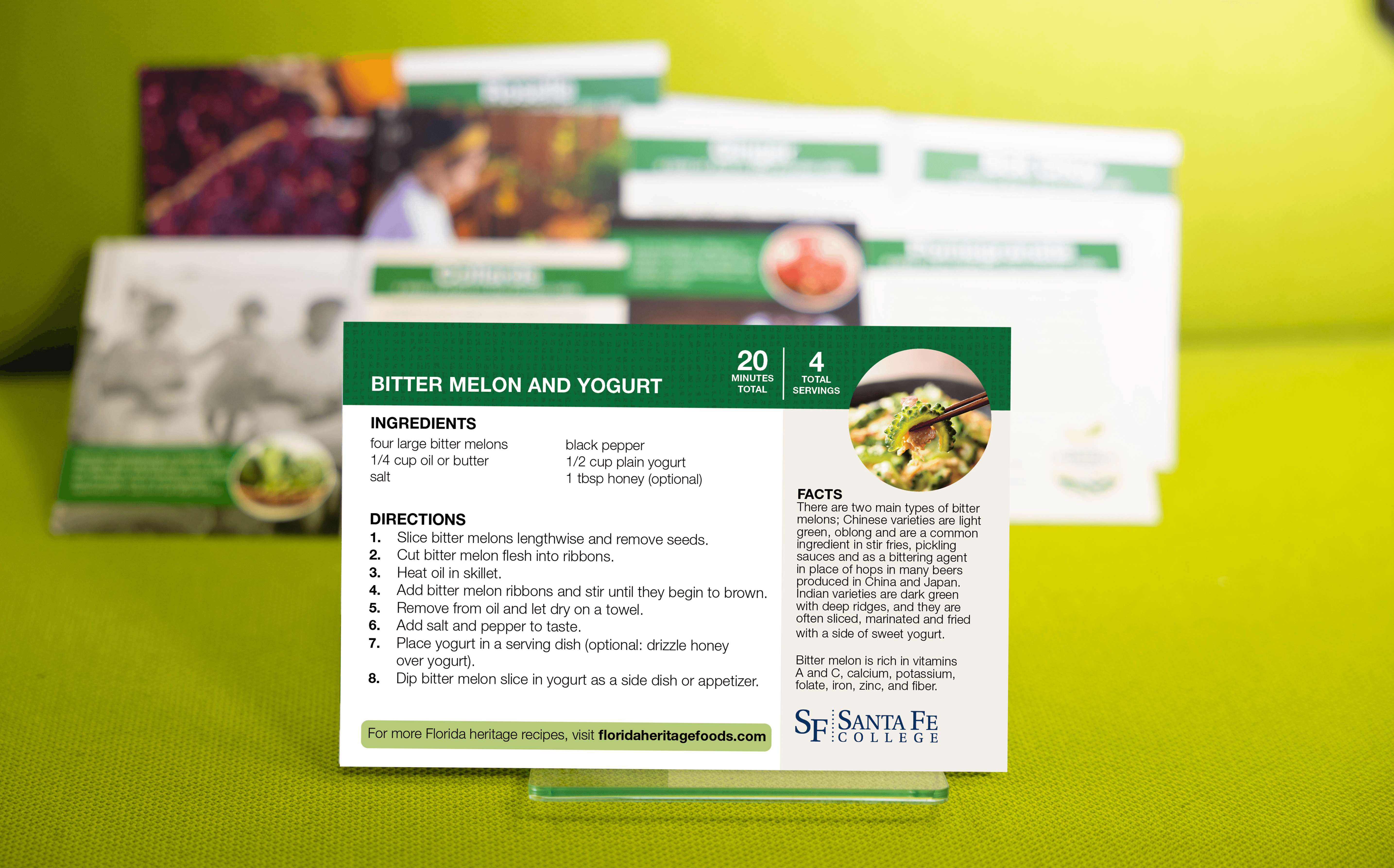
Bitter melon seeds should be planted directly into the garden in March through September. they will be ready for harvest in May through November. as a vining plant they need support along a fence or trellis. Pick when green or slightly turning yellow. Allow a few fruits to ripen in order to save the seeds for replanting the following season. To plan a heritage garden, download the ‘Planning a Florida Heritage Garden (PDF).’
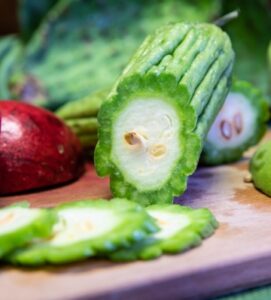
Santa Fe College Partnered with Multiple Organizations in a Collaborative Effort to Bring Awareness of the Heritage Plants In Florida.
BY CULTURAL HISTORY
BY GROWING SEASON
DROUGHT TOLERANT PLANTS
Commitment to Equal Access and Equal Opportunity
Santa Fe College is committed to an environment that embraces diversity, respects the rights of all individuals, is open and accessible, and is free of harassment and discrimination. For more information, visit sfcollege.edu/eaeo or contact equity.officer@sfcollege.edu.
SACSCOC Accreditation Statement
Santa Fe College is accredited by the Southern Association of Colleges and Schools Commission on Colleges (SACSCOC). For more information, visit sfcollege.edu/sacscoc.
